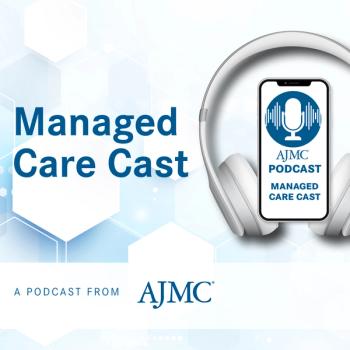
Effective Solutions for Drug Shortages: Market Incentives, Infrastructure, and Quality Management
Crystal S. Denlinger, MD, FACP, CEO of the National Comprehensive Cancer Network, discusses different policy approaches to address the ongoing cancer drug shortage.
Cancer centers are mitigating drug shortages through careful waste management and adjusting regimens, says Crystal S. Denlinger, MD, FACP, CEO of the National Comprehensive Cancer Network.
In June, the NCCN released
This transcript has been lightly edited.
Transcript
How effective have waste reduction and adjusted dosing strategies been in managing shortages, and what challenges remain in their implementation?
We don't have any data on long-term effectiveness of these strategies, but what we do know from our studies and this
The centers that responded and that are participating in our survey are doing a tremendous job of mitigating the impact of drug shortages through careful waste management procedures, but also working to adjust timing and dosing of the regimens within evidence-based recommendations. So, they are not stretching the regimens too long or lowering doses too much, but most chemotherapy regimens have a little bit of a window that we know is within the therapeutic window, and there are ways in which you can modify doses and time for that.
We've seen centers that are also potentially limiting the ability to order multiple cycles of therapy at a time. So instead of being able to order maybe 4 cycles, you only order 2 cycles, so that there is more thought about whether that drug needs to be allocated to that patient. We may also see physicians that are switching to an alternative regimen that doesn't include the drug on shortage, or a regimen that has similar effectiveness and efficacy, again, according to evidence-based guidelines and evidence-based practice. But all these processes are very time consuming, both for the physician at the decision-making process, as well as the downstream burden of making these switches. The additional administrative components of this care delivery can be challenging as well.
We've unfortunately found that although all the patients were able to receive the therapy that they were intended to receive, 27% of our centers reported that the current shortages were causing treatment delays due to additional prior authorization needed for a modified treatment plan, when that treatment plan was due to a drug shortage concern. And so, while these mitigation strategies are put into place to protect the patients, it does mean that there is some potential for challenges in receiving therapy in a timely fashion.
We also want to note that our member institutions are leading academic cancer centers across the country, which are particularly well equipped to deal with these types of disruptive shortages. So, the data that we're seeing in the survey, where additional mitigation strategies are necessary and authorization could result in treatment delays, could actually be part of a larger problem or just the tip of the iceberg when we look more broadly across the US hospital systems, and look at things like safety net hospitals and community practices that serve more vulnerable members of our community.
The survey suggests economic incentives like tax breaks or manufacturing grants for generic drugmakers. How do you envision these incentives working in practice, and what policy changes are necessary to support their implementation?
The good news about the current drug shortage, especially the drug shortage over the past year with the carboplatin and cisplatin—if there is a silver lining in all of this—is that people started talking about this challenge and this problem. I've been a GI [gastrointestinal] medical oncologist for my career and 5-fluorouracil leucovorin has intermittently been on shortage for a while now. In fact, that's one of the drugs that was consistent across all 3 surveys as being in shortage.
The centers that were surveyed found that the most promise is really in the idea of tax breaks and manufacturing grants to incentivize the production of high-quality generic medications. And of course, that's important because these medications form the backbone of many of our multiagent regimens across both the curative and palliative intent setting. There's a recognition that one of the challenges is inadequate infrastructure around communication and information, as well as limited preparedness strategies. But at the heart, it's still a market issue.
The generic drug market and pricing don't support a resilient and sustainable supply of clinical generic medications. The policies around the incentives, like tax breaks and manufacturing grants, could serve to help correct this process in the current marketplace, because everyone in the marketplace operates on such a narrow margin and the current marketplace incentivizes business practices that may falter in the face of any sort of threat.
There are a number of proposals that we've seen through legislation recently in Congress, which include limiting the application of generic drug inflation rebates under the Medicaid Drug Rebate Program, recognizing that these critical medications are already underpriced; exempting generic sterile injectable drugs with at least 1 indication for serious diseases or conditions that are made by more than 1 manufacturer from being required to provide 340B pricing and rebates; and then also developing tax incentives that encourage the manufacturing of generic medications in the United States. We do think that appropriate market incentives are going to be necessary to help ensure a more robust and resilient supply chain.
Newsletter
Stay ahead of policy, cost, and value—subscribe to AJMC for expert insights at the intersection of clinical care and health economics.








































